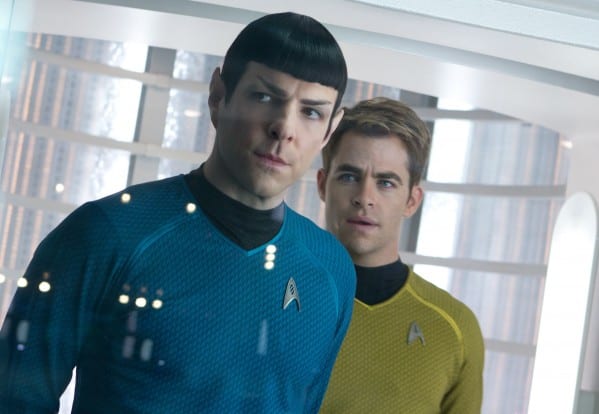In Star Trek Into Darkness, opening today, the crew might as well have rechristened the Enterprise the U.S.S. Kitchen Sink; certainly that’s what they filmmakers have thrown into this, the second film in the reboot of a series rebooted so much, it might have been designed in a cowboy footwear store.
One of the fun things about a reboot is that you get to experience old things as new. This incarnation of the series — which follows a “new” timeline of the original crew — makes ample references to iconic items from the original: There are references to Klingons, tribbles, Dr. Carol Marcus, Khan, photon torpedoes, “the needs of the many” and the Enterprise’s famous “five-year mission.”
It also, sometimes, makes the film unintentionally comic, as recycled lines (especially Dr. McCoy’s penchant for homespun aphorism) sound suddenly cliched. There’s also the problem that the ad campaign promises that “nothing can prepare us” for what happens, though of course, it’s easy to prepare: Just watch Star Trek II.
Another downside is that the screenwriters (here and in Star Trek) have seemed more interested in reinventing most of the characters for their own uses, and sacrificing what we have come to love about them. The most awkward fit of these is the relationship between Kirk (Chris Pine, pictured right — who is, sadly, shirtless only once) and Spock (Zachary Quinto, pictured left). The original actors, William Shatner and Leonard Nimoy, invented the ultimate bromance, two men who occasionally argued but were never disrespectful of the other. Here, they snipe like cats in a bag. And the plot changes focus so much, it’s difficult to tell the good guys from the villains.
Still, such quibbles aside, director J.J. Abrams has concocted a rip-roaring sci-fi action picture with great special effects (the 3-D is well used) and a touching, keenly played performance by Quinto. It’s hard when you’re supposed to be the only emotionless character on screen to show the heart of a picture, but Quinto does it. And, considering his all-out brawl with the bad guy (Benedict Cumberbatch) on the streets of San Francisco, it’s to his credit that the audience experiences it as a duel, not as a gay-bashing.
In wide release.

















